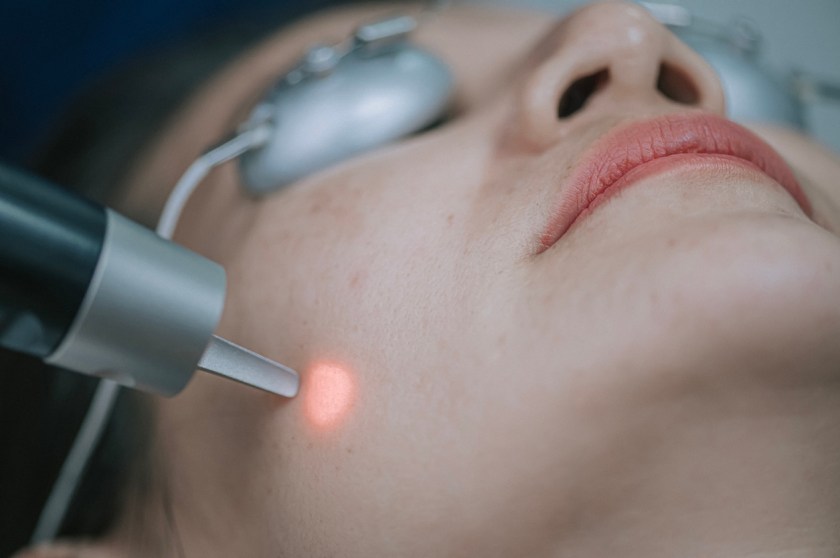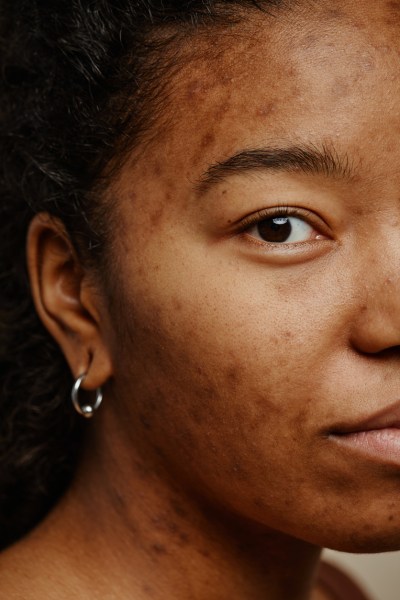Here’s How To Navigate Inflammatory Skin Disorders In Darker Fitzpatrick Skin Types

Key considerations and cautions for treating melanin-rich skins.
In the field of dermatology, the diversity of human skin brings both challenges and opportunities. Inflammatory skin conditions encompass a wide array of conditions, including acne, eczema and psoriasis.
The challenge for clinicians lies in diagnosing these conditions accurately and promptly, especially in individuals with darker Fitzpatrick skin types. Within the dermatology and medical field, it has been identified that within studies and pre-existing textbooks, that majority of images or research has been mainly conducted on caucasian skin, leading to an impact on darker fitzpatrick types in everyday practices upon the risk of misdiagnosis.
To discuss this topic further, we sat down with Dr Lee-Mei Yap, a Medical Cosmetic and Laser Dermatologist based in Victoria, to find out more about what considerations must be made, alongside how to effectively treat or refer when required.
Graduating with Honours in Medicine from the University of Melbourne, Dr Yap is a Fellow of the Australasian College of Dermatologists. Her practice encompasses a diverse spectrum of skin conditions affecting both adults and children, ranging from acne to pigmentation and skin cancers.
What is the biggest consideration (or difference) when it comes to diagnosing inflammatory skin conditions in darker Fitzpatrick skin types?
1. Colour variation
One of the most distinctive aspects of skin of colour is its rich melanin (pigment) content. While this offers inherent protection against ultraviolet (UV) damage, it can significantly affect the clinical presentation of inflammatory skin conditions.
Redness, a hallmark of inflammation, is often less pronounced in skin of colour due to the masking effect of melanin. For example, psoriasis may appear as dark brown or grey patches, and the absence of redness can lead to incorrect diagnosis, or under-estimation of the severity of the condition. Furthermore, delayed treatment can exacerbate the condition and increase the risk of scarring or persistent pigmentation issues.
2. Post-Inflammatory Hyperpigmentation (PIH)
One of the most significant considerations is the increased risk of PIH in darker skin tones as there is abundant melanin in the skin. PIH refers to the persistent darkening of the skin following inflammation or injury to the skin. Even minor inflammatory events like acne breakouts can trigger excessive melanin production, leading to long-lasting PIH which is often a chief complaint and can be distressing for the affected individual.

It can also be challenging for the clinical to distinguish between the original skin condition and the subsequent darkening caused by PIH. It is important for clinicians and practitioners to consider this risk when diagnosing and planning treatments.
3. Safety of Skin Treatments
a. Lasers
Lasers are available for hair and tattoo removal, redness and brown spots. Individuals with skin of colour are more likely to get side effects with certain lasers such as lightening or darkening of the skin, burning and even scarring.
Not all lasers or light sources can be used on darker skin types, so it may be necessary to test the area to be treated on a small part of the skin first. For example, with Intense pulse light (IPL), there is increased risk of scarring and permanent pigmentary changes if the IPL is used in tanned skin or darker skin types.
It is therefore important to ensure that the provider treating you is skilled and has experience with treating skin of colour.

b. Chemical peels
Not all chemical peels should be used in skin of colour. Deeper peels can cause hyper (or) hypo-pigmentation, and can even lead to scarring. It is therefore important to be thoroughly evaluated by a dermatologist or qualified practitioner prior to the procedure.
4. Sun Protection
Health experts advise everyone, regardless of skin colour, to use a sunscreen with a broad-spectrum SPF. Although individuals with skin of colour won’t get sunburnt as quickly, they can still burn and be susceptible to sun-induced damage, such as brown spots, wrinkles and skin cancer.
5. Differences in scarring
Keloid or hypertrophic scars are more common in individuals with darker skin. Keloids are scars that continue to grow beyond the time for normal wound healing and are more prevalent in those of South Asian and African ancestry. The precipitating injury can be as minor as an insect bite or acne pimple, or as extensive as surgical (even ear-piercing) wounds.
What is the current industry (across medical and even from your knowledge into beauty/allied health) lacking when it comes to this issue?
When it comes to diagnosing and treating inflammatory skin conditions in darker Fitzpatrick skin types, there are several shortcomings, spanning medical practices and extending into beauty and allied health sectors.
1. Recognition and Education
Despite significant advancements in dermatology, diagnosing and treating inflammatory skin conditions in skin of colour is an important topic that needs better recognition, research and education.
The abundance of melanin in darker skin can mask redness and inflammation, leading to misdiagnosis or under-diagnosis of inflammatory skin conditions. This may result in delayed or inappropriate treatment and suboptimal outcomes.
2. Post-Inflammatory Hyperpigmentation (PIH) Management
The propensity for PIH in darker skin is a paramount consideration when it comes to planning treatment and aftercare. Practitioners may not adequately emphasise PIH prevention, leading to persistent and distressing pigmentary issues.
4. Tailoring of treatment plans
Many treatment protocols in clinics are designed for lighter skin tones and may not suit the needs of individuals with darker skin. A one-size-fits-all approach can result in suboptimal outcomes, so it is important for treatment protocols to incorporate settings and guidelines for treatment of skin of colour.
5. Clinical Representation
The lack of representation of diverse skin tones in clinical trials can lead to treatment recommendations that may not be effective or safe for darker skin types.
How can practitioners improve their daily practice to ensure correct identification and diagnosis of inflammatory skin conditions with darker Fitzpatricks?
Practitioners can take steps to enhance their daily practice and ensure the accurate diagnosis of inflammatory skin conditions in individuals with darker skin types.
1. Education and training
Training programs for doctors, allied health and beauty practitioners must integrate comprehensive education and hands-on experience in diagnosing and treating inflammatory skin conditions in all skin types. Stay updated with the latest guidelines, research and best practices in diagnosing and treating skin conditions in diverse skin tones. Attend workshop and conferences that specifically address these concerns.

Practitioners should always keep in mind the increased risk of PIH in darker skin types. It is important to consider this risk when designing treatment plans and discussing potential outcomes with patients.
2. Customised Treatment Plans
Tailor treatment plans to account for the unique characteristics of skin of colour. This may involve adjusting device settings, medication dosages, treatment frequencies, or employing different modalities altogether.
3. Patient education
Educating patients about their skin type, potential challenges of treatment, and the importance of early intervention is key. Empower them to ask questions and seek professional advice promptly.
4. Regular follow-up
Keep track of patient progress through regular follow-up appointments. This allows you to assess the effectiveness of the treatment plan and make necessary adjustments.
Enhancing the accuracy of diagnosing and treating inflammatory skin conditions in individuals with darker Fitzpatrick skin types requires a combination of knowledge, experience, and a commitment to ongoing learning. By incorporating these strategies into their daily practice, practitioners can provide comprehensive and effective care that addresses the unique needs of individuals with darker skin types.
Read the latest issue of SPA+CLINIC below:
There are 5 ways you can catch up with SPA+CLINIC
- Our quarterly print magazine, delivered to your door. Subscribe here.
- Our website, which is updated daily with its own completely unique content and breaking news.
- Our weekly newsletter – free to your inbox! Subscribe here.
- Our digital magazine – click here to view previous issues.
- Our social media – see daily updates on our Instagram, Facebook & Linkedin
The post Here’s How To Navigate Inflammatory Skin Disorders In Darker Fitzpatrick Skin Types appeared first on SPA+CLINIC.
